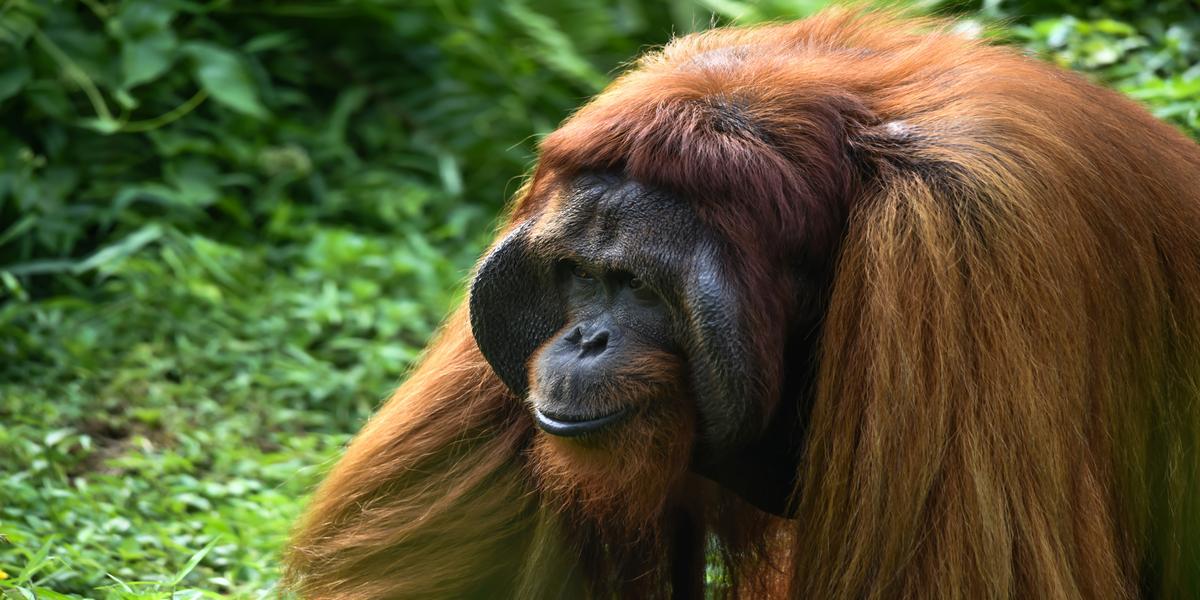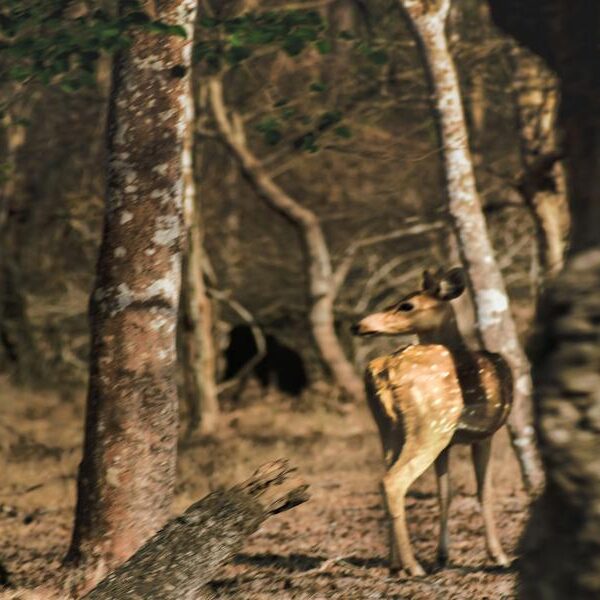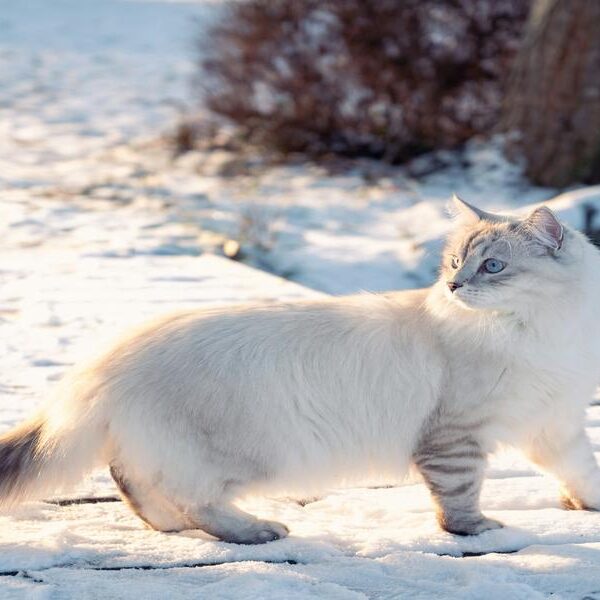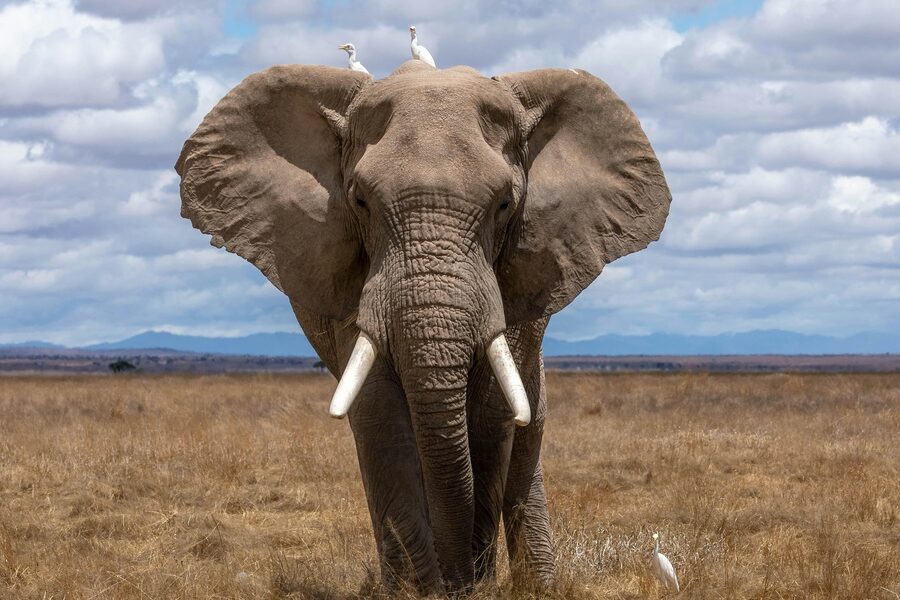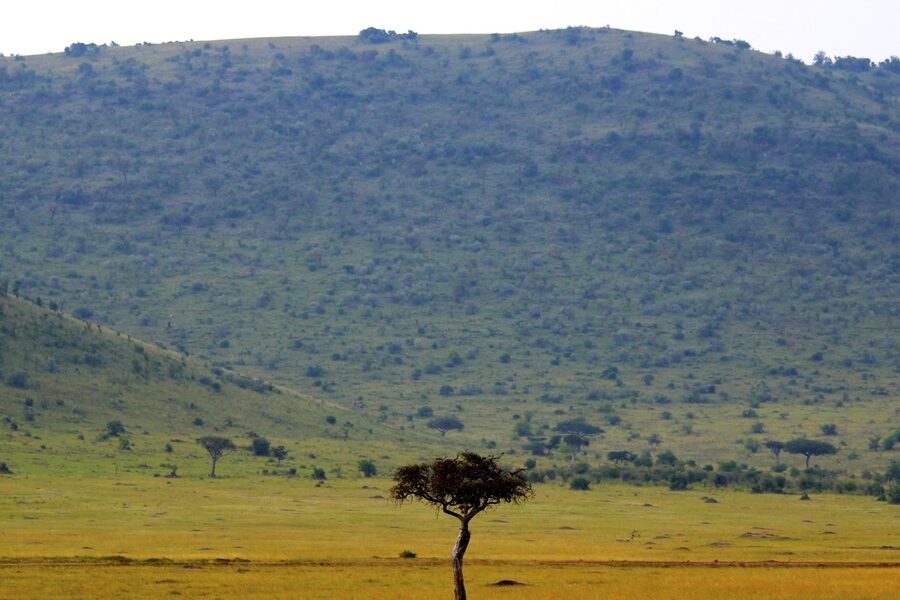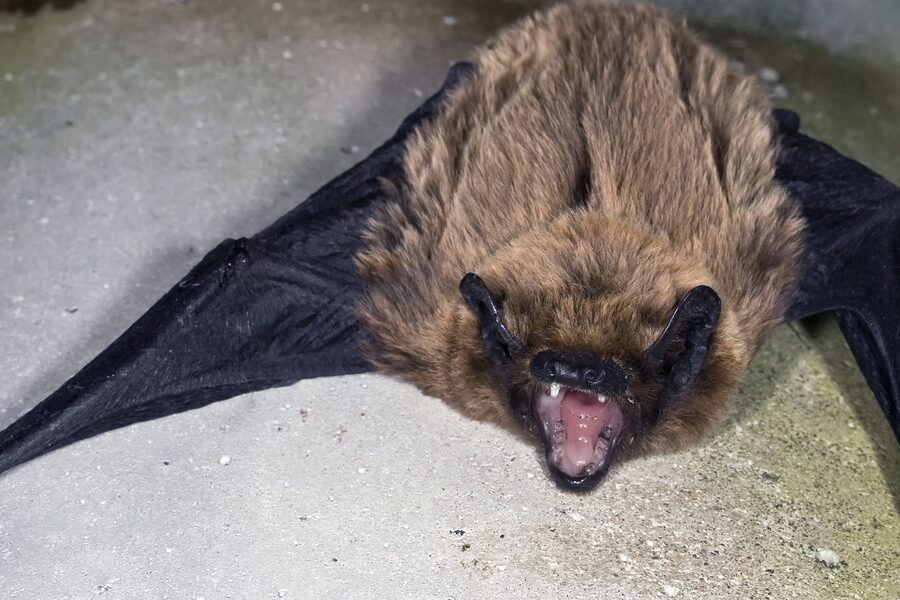Across the world’s tropical rainforests, 50 endangered animals face grave threats to their survival. These species range from the mighty African Forest Elephant in Congo to the agile White-handed Gibbon in Southeast Asia. Many of these animals are unique to their habitats, with some found only in a single country or even a small patch of forest. Their scientific names, conservation status, and primary regions provide key insight into where they live and how urgent their protection needs are.
Explore this detailed list to learn about endangered tropical rainforest animals, their habitats, and the risks they endure.
What Does “Endangered” Mean for Tropical Rainforest Animals?
The term “endangered” refers to species that are at serious risk of extinction in the near future. Conservation status levels, such as Critically Endangered and Endangered, come from organizations like the International Union for Conservation of Nature (IUCN). These statuses are based on factors like population size, decline rate, and threats such as habitat loss, poaching, or climate change. Understanding these terms helps identify which animals need immediate attention and conservation efforts.
Where Are Endangered Tropical Rainforest Animals Found?
Endangered tropical rainforest animals inhabit diverse regions mainly across Southeast Asia, the Congo Basin, South America’s Amazon, and Madagascar. Each species relies on specific forests and ecosystems. For example, the Sumatran Orangutan is found only in Southeast Asia’s island rainforests, while the African Forest Elephant roams the dense Congo rainforests. Knowing the primary region of an animal is essential for targeted conservation strategies and helps track how habitat changes impact these species.
Endangered Tropical Rainforest Animals
| Animal Name | Scientific Name | Conservation Status | Primary Region |
|---|---|---|---|
| Sumatran Orangutan | Pongo abelii | Critically Endangered | Southeast Asia |
| Grauer’s Gorilla | Gorilla beringei graueri | Critically Endangered | Congo |
| Golden Lion Tamarin | Leontopithecus rosalia | Endangered | Amazon |
| Philippine Eagle | Pithecophaga jefferyi | Critically Endangered | Southeast Asia |
| Sumatran Tiger | Panthera tigris sumatrae | Critically Endangered | Southeast Asia |
| Okapi | Okapia johnstoni | Endangered | Congo |
| Silky Sifaka | Propithecus candidus | Critically Endangered | Madagascar |
| Javan Rhino | Rhinoceros sondaicus | Critically Endangered | Southeast Asia |
| Cross River Gorilla | Gorilla gorilla diehli | Critically Endangered | Congo |
| Tapanuli Orangutan | Pongo tapanuliensis | Critically Endangered | Southeast Asia |
| Bornean Orangutan | Pongo pygmaeus | Critically Endangered | Southeast Asia |
| African Forest Elephant | Loxodonta cyclotis | Critically Endangered | Congo |
| Sunda Pangolin | Manis javanica | Critically Endangered | Southeast Asia |
| Sumatran Rhino | Dicerorhinus sumatrensis | Critically Endangered | Southeast Asia |
| Cotton-top Tamarin | Saguinus oedipus | Critically Endangered | South America |
| Indri | Indri indri | Critically Endangered | Madagascar |
| Black-and-white Ruffed Lemur | Varecia variegata | Critically Endangered | Madagascar |
| Greater Bamboo Lemur | Prolemur simus | Critically Endangered | Madagascar |
| Ploughshare Tortoise | Astrochelys yniphora | Critically Endangered | Madagascar |
| Bonobo | Pan paniscus | Endangered | Congo |
| Chimpanzee | Pan troglodytes | Endangered | Congo |
| Pygmy Hippopotamus | Choeropsis liberiensis | Endangered | West Africa |
| Giant Otter | Pteronura brasiliensis | Endangered | Amazon |
| Baird’s Tapir | Tapirus bairdii | Endangered | Central America |
| Malayan Tapir | Tapirus indicus | Endangered | Southeast Asia |
| Goodfellow’s Tree-kangaroo | Dendrolagus goodfellowi | Endangered | New Guinea |
| Drill | Mandrillus leucophaeus | Endangered | West Africa |
| White-bellied Pangolin | Phataginus tricuspis | Endangered | Congo |
| Golden Poison Frog | Phyllobates terribilis | Endangered | South America |
| Great Green Macaw | Ara ambiguus | Critically Endangered | Central America |
| Aye-aye | Daubentonia madagascariensis | Endangered | Madagascar |
| Proboscis Monkey | Nasalis larvatus | Endangered | Southeast Asia |
| White-handed Gibbon | Hylobates lar | Endangered | Southeast Asia |
| Brown Spider Monkey | Ateles hybridus | Critically Endangered | South America |
| Black-faced Black Spider Monkey | Ateles chamek | Endangered | Amazon |
| Ring-tailed Lemur | Lemur catta | Endangered | Madagascar |
| Grey Parrot | Psittacus erithacus | Endangered | Congo |
| Goliath Frog | Conraua goliath | Endangered | West Africa |
| Roloway Monkey | Cercopithecus roloway | Critically Endangered | West Africa |
| Western Lowland Gorilla | Gorilla gorilla gorilla | Critically Endangered | Congo |
| Siamang | Symphalangus syndactylus | Endangered | Southeast Asia |
| Matschie’s Tree-kangaroo | Dendrolagus matschiei | Endangered | New Guinea |
| Black-shanked Douc Langur | Pygathrix nigripes | Critically Endangered | Southeast Asia |
| Red-shanked Douc Langur | Pygathrix nemaeus | Endangered | Southeast Asia |
| Delacour’s Langur | Trachypithecus delacouri | Critically Endangered | Southeast Asia |
| Tonkin Snub-nosed Monkey | Rhinopithecus avunculus | Critically Endangered | Southeast Asia |
| Pennant’s Red Colobus | Piliocolobus pennantii | Critically Endangered | West Africa |
| Banteng | Bos javanicus | Endangered | Southeast Asia |
| Lowland Anoa | Bubalus depressicornis | Endangered | Southeast Asia |
| Black-crested Gibbon | Nomascus concolor | Critically Endangered | Southeast Asia |
Images and Details

Sumatran Orangutan
Known as the “person of the forest,” this great ape is a solitary tree-dweller with long red hair. It is found only on the island of Sumatra, where its rainforest home is rapidly disappearing due to palm oil plantations.

Grauer’s Gorilla
The world’s largest primate, the Grauer’s Gorilla lives in the dense rainforests of the eastern Democratic Republic of Congo. Civil unrest, illegal mining, and poaching have caused its population to plummet dramatically.

Golden Lion Tamarin
This small, brilliantly colored monkey from Brazil’s Atlantic rainforest is a conservation success story. Once numbering only 200, captive breeding and reintroduction programs have helped its population recover, though it remains threatened.

Philippine Eagle
One of the largest and most powerful eagles in the world, this apex predator is the national bird of the Philippines. Deforestation of its tropical rainforest habitat is the primary threat to its survival.

Sumatran Tiger
The smallest of all tiger subspecies, it is found exclusively on the Indonesian island of Sumatra. Its dark coat and narrow stripes provide perfect camouflage in the dense forest, but it is highly threatened by poaching and habitat loss.

Okapi
Often called the “forest giraffe,” the elusive okapi has zebra-like stripes on its legs for camouflage. It lives in the dense Ituri Forest of the Congo and was unknown to science until 1901.

Silky Sifaka
Nicknamed the “angel of the forest” for its creamy-white fur and graceful leaps between trees. This lemur is one of the rarest mammals on Earth, found only in a small patch of rainforest in northeastern Madagascar.

Javan Rhino
One of the rarest large mammals on Earth, with a single, small population in Indonesia’s Ujung Kulon National Park. This single-horned rhino is extremely vulnerable to disease and natural disasters.

Cross River Gorilla
The world’s rarest great ape, with fewer than 300 individuals living in the mountainous forests on the border of Nigeria and Cameroon. They are shy and wary of humans due to intense hunting pressure.

Tapanuli Orangutan
The most recently discovered great ape species and also the most endangered. Fewer than 800 individuals survive in a tiny, fragmented forest area in North Sumatra, threatened by a hydroelectric dam project.

Bornean Orangutan
Slightly larger and darker than its Sumatran cousin, this great ape is native to the island of Borneo. Widespread deforestation for logging and agriculture is the single greatest threat to its survival.

African Forest Elephant
A distinct species from the savanna elephant, these smaller elephants are crucial “gardeners” of the rainforest. They are severely threatened by poaching for their harder, denser ivory and by habitat loss.

Sunda Pangolin
Often called a “scaly anteater,” this nocturnal mammal is covered in protective keratin scales. It is the world’s most trafficked non-human mammal, hunted relentlessly for its scales and meat.

Sumatran Rhino
The smallest and only two-horned rhino in Asia, it is covered in long hair. With only a few dozen left, this “hairy rhino” is functionally extinct in the wild in Malaysia and survives only in small pockets in Indonesia.

Cotton-top Tamarin
A tiny monkey with a spectacular crest of long white hair, found only in the tropical forests of northwestern Colombia. Its habitat is being destroyed for agriculture, logging, and urban expansion.

Indri
The largest living lemur, famous for its haunting, song-like calls that travel for miles through the rainforest. It is considered sacred in local folklore but is severely threatened by habitat destruction.

Black-and-white Ruffed Lemur
These striking lemurs are essential pollinators, using their long snouts to feed on nectar. They are highly social and face severe threats from both habitat loss and hunting.

Greater Bamboo Lemur
A highly specialized lemur that has evolved to eat cyanide-laced bamboo shoots without being poisoned. It is one of the world’s most endangered primates due to the destruction of its bamboo forest home.

Ploughshare Tortoise
Considered the most endangered tortoise on Earth, its beautiful, high-domed golden shell makes it a prime target for the illegal pet trade, pushing it to the very brink of extinction.

Bonobo
A close relative of the chimpanzee, bonobos are known for their peaceful, matriarchal social structure. They are found only in the rainforests south of the Congo River and threatened by poaching and habitat loss.

Chimpanzee
Our closest living relatives, chimpanzees are highly intelligent tool-users living in complex social groups. Their populations are declining across Africa due to habitat destruction, disease, and the bushmeat trade.

Pygmy Hippopotamus
A much smaller, solitary, and forest-dwelling version of its famous cousin. This shy, nocturnal creature is threatened by deforestation from logging and conversion of land for farming.

Giant Otter
The world’s longest otter, nicknamed the “river wolf” for its sociable and formidable predatory nature. It lives in family groups and is threatened by mining pollution and habitat degradation in Amazonian rivers.

Baird’s Tapir
The largest native land mammal in Central America, sometimes called the “mountain cow.” This ancient species is a vital seed disperser but is threatened by habitat loss and hunting.

Malayan Tapir
Instantly recognizable by its distinctive black-and-white coat, which provides excellent camouflage in the moonlit forest. Its population is suffering from large-scale deforestation for palm oil.

Goodfellow’s Tree-kangaroo
This brilliantly colored marsupial has adapted to life in the trees of mountainous rainforests. It is threatened by over-hunting and the continuous loss of its habitat to agriculture and logging.

Drill
A large, short-tailed monkey related to the mandrill but with a distinctive bare black face. It has one of the most restricted ranges of any African primate and is a high priority for conservation.

White-bellied Pangolin
A small, tree-climbing pangolin from the rainforests of Central and West Africa. Like its Asian relatives, it is heavily trafficked for its scales and meat for use in traditional medicine and luxury food.

Golden Poison Frog
One of the most toxic animals on Earth, the skin of a single frog has enough poison to kill ten men. It lives in a tiny, 2-square-mile patch of Colombian rainforest, making it highly vulnerable to habitat loss.

Great Green Macaw
One of the world’s largest macaws, this magnificent bird relies heavily on the giant mountain almond tree for food and nesting. Selective logging of this tree has pushed the macaw to the brink.

Aye-aye
A unique nocturnal lemur with large eyes, rodent-like teeth, and a long, thin middle finger. It uses this special finger to tap on trees and extract insect grubs, filling a niche similar to a woodpecker.

Proboscis Monkey
Famous for the male’s comically large, fleshy nose, which is used to attract mates. This unique primate is found only along the rivers and coastal mangrove forests of Borneo, which are rapidly disappearing.

White-handed Gibbon
Also known as the lar gibbon, these small, agile apes are masters of brachiation, swinging gracefully through the forest canopy. They form monogamous pairs and perform loud, musical duets to mark their territory.

Brown Spider Monkey
Found in the rainforests of Colombia and Venezuela, this highly social monkey is a crucial seed disperser. It is one of the most threatened primates in the world due to extensive habitat destruction and hunting.

Black-faced Black Spider Monkey
Native to the western Brazilian Amazon, as well as Peru and Bolivia. Its long limbs and incredibly strong prehensile tail, which acts as a fifth limb, make it perfectly adapted for a life high in the forest canopy.

Ring-tailed Lemur
Though an icon of Madagascar, wild populations are collapsing due to habitat loss, charcoal production, and hunting. Unlike most lemurs, it spends a great deal of its time on the ground.

Grey Parrot
Famed for its remarkable intelligence and uncanny ability to mimic human speech. Its popularity in the pet trade has led to unsustainable trapping, which has devastated its wild populations in Central African rainforests.

Goliath Frog
The largest frog in the world, it can grow to the size of a domestic cat. Found only in a few fast-flowing rivers in Cameroon and Equatorial Guinea, it is threatened by hunting for food and habitat degradation.

Roloway Monkey
Easily recognized by its long white beard and yellow thighs, this monkey is one of Africa’s most threatened primates. It is thought to be extinct in Ghana and survives only in small parts of Côte d’Ivoire.

Western Lowland Gorilla
The most numerous gorilla subspecies, yet its population has declined by over 60% in the last 25 years due to poaching, disease like Ebola, and habitat destruction.

Siamang
The largest of the gibbons, known for the inflatable throat sac under its chin that amplifies its booming calls. It lives in the forests of Sumatra, Malaysia, and Thailand, where habitat loss is a constant threat.

Matschie’s Tree-kangaroo
Also known as the Huon tree-kangaroo, it has rich reddish-brown fur and a long, pale tail for balance. This solitary animal lives in the remote, high-altitude cloud forests of a single peninsula in Papua New Guinea.

Black-shanked Douc Langur
An incredibly colorful primate from Vietnam and Cambodia, sometimes called the “queen of primates.” They are severely threatened by hunting for the traditional medicine trade and by habitat fragmentation.

Red-shanked Douc Langur
Another of Asia’s most colorful primates, with bright maroon “stockings” and a golden face. This gentle leaf-eater lives in the rainforests of Vietnam, Laos, and Cambodia, threatened by hunting and habitat loss.

Delacour’s Langur
One of the world’s most endangered primates, with only about 200 individuals left. This striking black-and-white monkey is found only in the rugged limestone karst forests of northern Vietnam.

Tonkin Snub-nosed Monkey
A bizarre-looking monkey with a short, upturned nose and pale blue rings around its eyes, found only in northern Vietnam. It faces extreme threats from hunting and the clearing of its forest home for agriculture.

Pennant’s Red Colobus
Found exclusively on Bioko Island in Equatorial Guinea, this monkey is a high-priority conservation target. Its population has been decimated by the illegal commercial bushmeat trade.

Banteng
A species of wild cattle found in the forests and grasslands of Southeast Asia. Its population has declined dramatically due to hunting for its horns and meat, habitat loss, and diseases from domestic cattle.

Lowland Anoa
The world’s smallest species of wild cattle, standing just over 3 feet at the shoulder. This “dwarf buffalo” lives in the undisturbed rainforests on the Indonesian island of Sulawesi and is threatened by hunting.

Black-crested Gibbon
This gibbon is found in the subtropical forests of China, Laos, and Vietnam. The males are black while females are born cream-colored, turn black, and then return to a buffy color, keeping a black cap. They are threatened by habitat loss.
